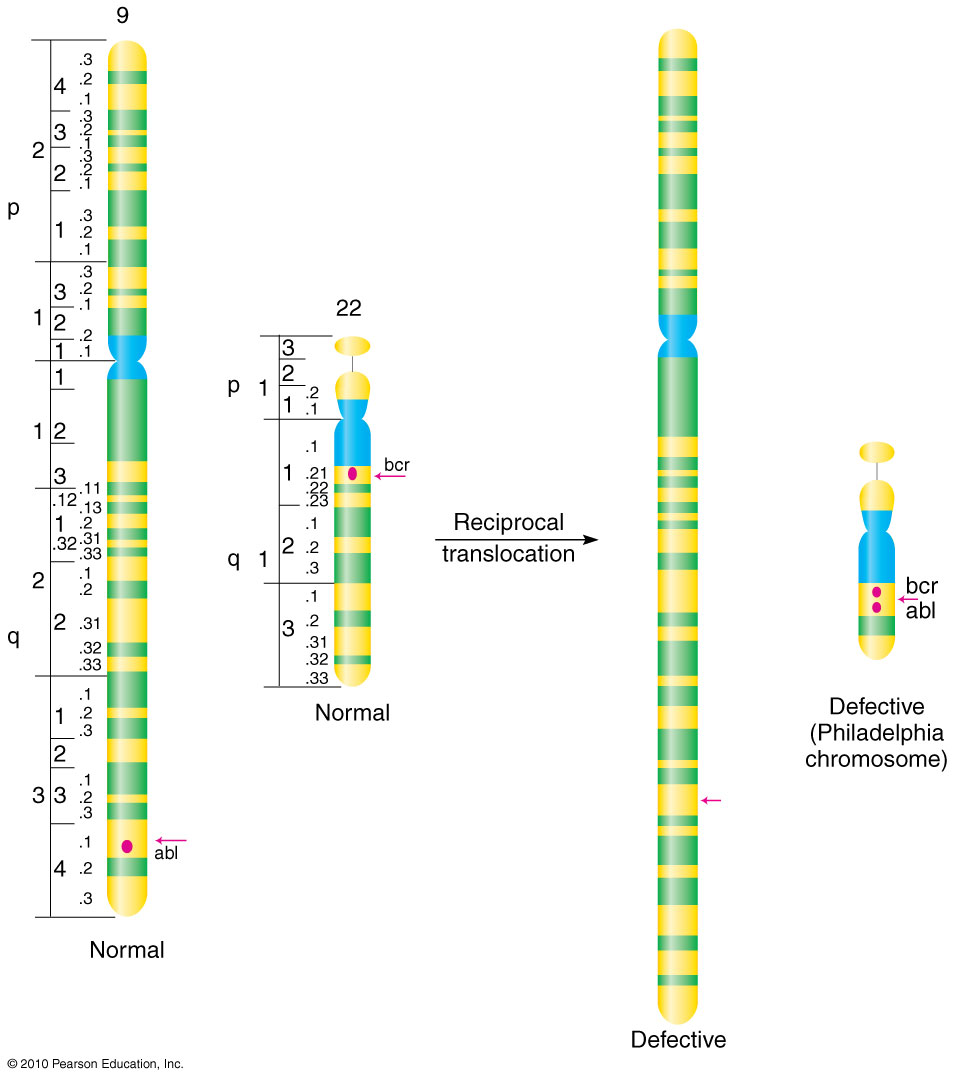
Reciprocal translocation in the Philadelphia Chromosome
Standard Chromosomes 9 &
22 are shown at left: they are subject to breakage at
the abi
and bcr loci, respectively. The so-called Philadelphia Chromosome is
detectable cytologically as an extra G-group chromosome, due to
the apparent shortening of the F-group Chromosome 22 by a reciprocal
exchange with Chromosome 9. [The reciprocal lengthening
of the long arm of Chromosome 9 was not obvious in
early studies].
Juxtaposition of the abl and bcr loci interferes with oncogenes (cancer suppressor genes) in the same region, which results in a specific form of cancer, Chronic Myologenous Leukemia (CML). The Philadelphia Chromosome was one of the first genetic conditions shown to be directly associated with cancer.
Juxtaposition of the abl and bcr loci interferes with oncogenes (cancer suppressor genes) in the same region, which results in a specific form of cancer, Chronic Myologenous Leukemia (CML). The Philadelphia Chromosome was one of the first genetic conditions shown to be directly associated with cancer.